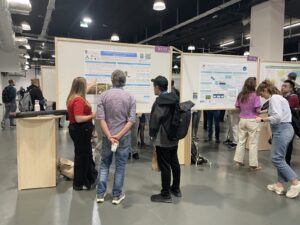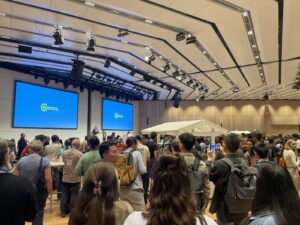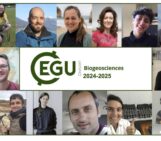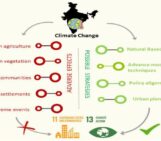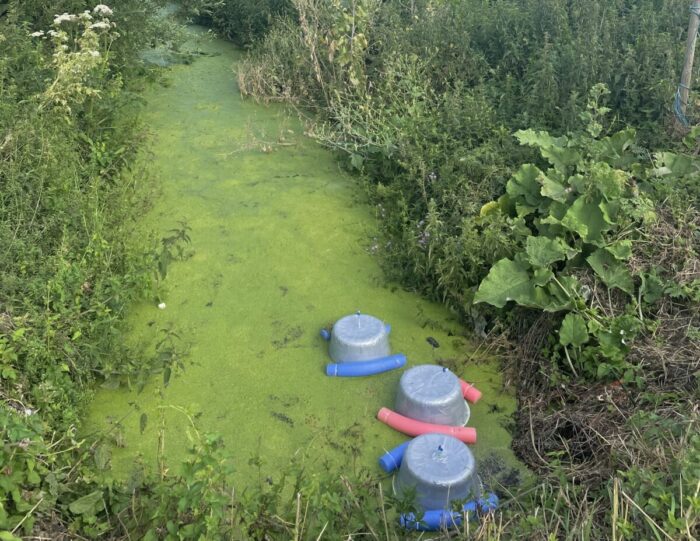
The notion that inland waters are passive participants in biogeochemical cycling, with lakes as recipients and rivers as pipes, has long been overturned. More and more research suggests the global importance of inland waters in biogeochemical cycles, particularly in greenhouse gas (GHG) exchange. EGU25 had a remarkable line-up of talks and posters on inland water GHG emissions. I’ll revisit some of my favorites here, but this is by no means an exhaustive review—it would have been difficult to see everything on this topic!
Global inland waters are important components of continental GHG budgets, with an increasing importance of anthropogenic contributions. They have a global warming potential of 8 (5-13) Pg CO2eq yr-1 – this is almost double the annual emissions of the entire EU. Ronny Lauerwald, the plenary speaker of BG4.6 “Greenhouse gas dynamics and fluxes in aquatic ecosystems”, discussed patterns, trends, and drivers in global inland water GHG emissions, highlighting the evolution of our knowledge and the consideration of natural vs. anthropogenic inland water GHG contributions. The most important contributions from riverine carbon dioxide (CO2) emissions (primarily from tropical systems), in addition to methane (CH4) from lakes and reservoirs. Nitrous oxide (N2O) accounts for only a small percentage of the global warming potential, although most is of anthropogenic origin.
This research is vital to inform targeted GHG mitigation strategies. Many of the other talks throughout the week addressed some of the current research gaps such as increasing overall spatial and temporal coverage of field observations (especially for small systems, e.g. ponds) and considering more ebullitive (bubbling) CH4 measurements. Small ponds and ditches are generally excluded from inland water GHG budgets due to difficulties in mapping their global spatial distribution. Jovana Radosavljevic discussed her research about the global importance of CO2 and CH4 emissions from small ponds (<5ha), which cover 9% of inland water surface area but are estimated to emit 14% and 31% of total inland water CO2 and CH4 emissions, respectively.
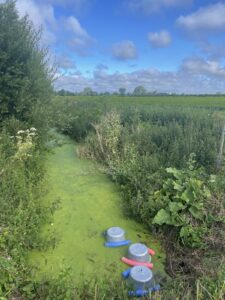
Field measurements of greenhouse gas emissions using floating chambers on a agricultural drainage ditch
There were several talks and posters about ditches—anthropogenic, linear waterways not yet mapped at a global scale, but high per area emitters of GHGs. Khadija Aziz shared her research about the controls and dynamics of GHG emissions in agricultural ditches in Sweden, where N2O emissions were positively related to nitrogen concentrations. Sofia Baliña looked at the effects of floating algal mats in ditches, whose presence resulted in a 10x increase in CH4 concentrations. Zhifeng Yan presented his work about GHG emissions from agricultural ditches in China, showing that ditch GHG emissions concentrations were higher than in connected rivers, driven by nutrient inputs.
The majority of observations contributing to global inland water budgets are from temperate climate regions, therefore it was great to see posters and talks with data from tropical and subarctic latitudes. For example, Judith Vogt presented her work on carbon fluxes of an Arctic-boreal river in Fennoscandia, where CO2 fluxes were low with low spatial heterogeneity and CH 4 fluxes were highest in a shallow water area (although low overall). Ivan Mammarella presented long term eddy covariance measurements of CO2 and CH4 from a small boreal lake, where the lake was a net source of CO2 (and a small net source of CH4) with higher interannual variability than surrounding forests and wetlands. In the tropics, Sharon Gubamwoyo examined GHG dynamics in springs under various land uses across a tropical highland system in Ken
ya, finding that agriculture-impacted springs had the highest CO2 fluxes. In a double-whammy, Núria Catalán gave a plenary talk about carbon emissions from two alpine lakes in the Pyrénées, where removing invasive fish surprisingly did not restore a lake’s natural ability to act as a carbon sink, as well as presenting a documentary about the effects of salinization on carbon cycling (as well as biodiversity and local communities) in/around the Gambia River, Gambia.
It was delightful to see so many excellent talks and posters and I look forward to reading more details about these studies. Let us know, what were some of your favorites this year?
Written by Teresa Silverthorn, edited by Lucia Layritz.

